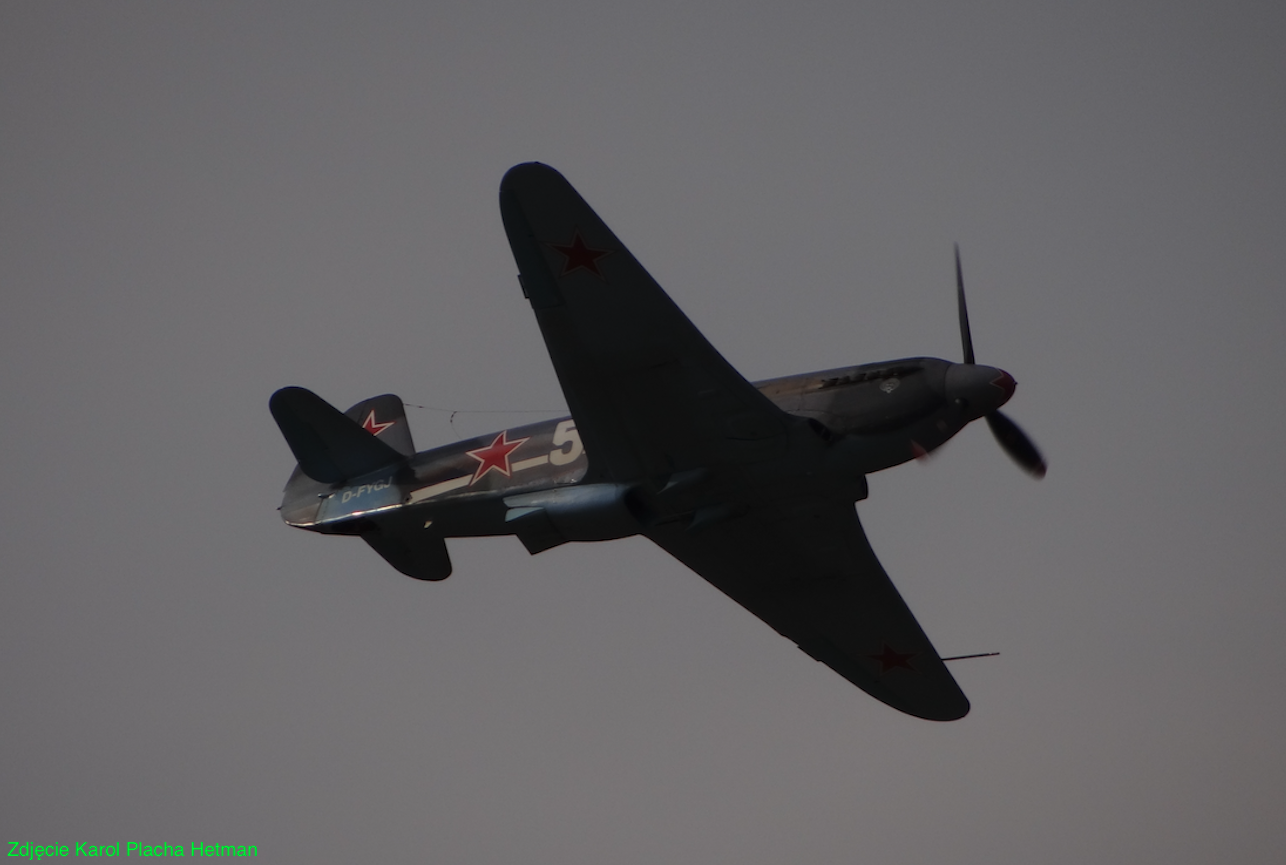Kraków 2007-11-20
2nd Fighter Aviation Regiment in Czyżyny. 1944-1966.
Introduction.
The Soviet plans included the creation of the Polish Air Force Association as the 3rd Fighter-Bomber Aviation Division. Due to the lack of appropriate equipment, the formation of the 3rd Fighter Aviation Division was started, consisting of three fighter regiments, which were given the designations 9th PLM, 10th PLM, 11th PLM. Incidentally, at that time the term “fighter aviation regiment” was used, not “fighter aviation regiment”. The basis was the operational order of 7 September 1944, which mentioned the establishment of the 1st Mixed Air Corps. The location was the town of Karłówka in Ukraine.
From 17 September 1944, training of pilots from the 9th PLM began at the Krasnograd airport, and pilots from the 10th PLM and 11th PLM at the Karłów airport. The basic aircraft was the Yak-1 fighter. The readiness to start military operations was achieved at the beginning of 1945, and on January 20, 1945, the division began to be redeployed to Poland. The Muscovites took great care to ensure that the Poles did not fight in the eastern territories of the Republic of Poland, and they only joined the fight after crossing the Bug River. The redeployment was carried out in several air and wheeled throws, and was completed in March 1945.
The first battles were fought at the end of March 1945, destroying enemy aircraft and fortifications. The division took direct part in the battles for Berlin. For its combat efforts, the division received the Grunwald Cross, Class I and the title of Brandenburg.
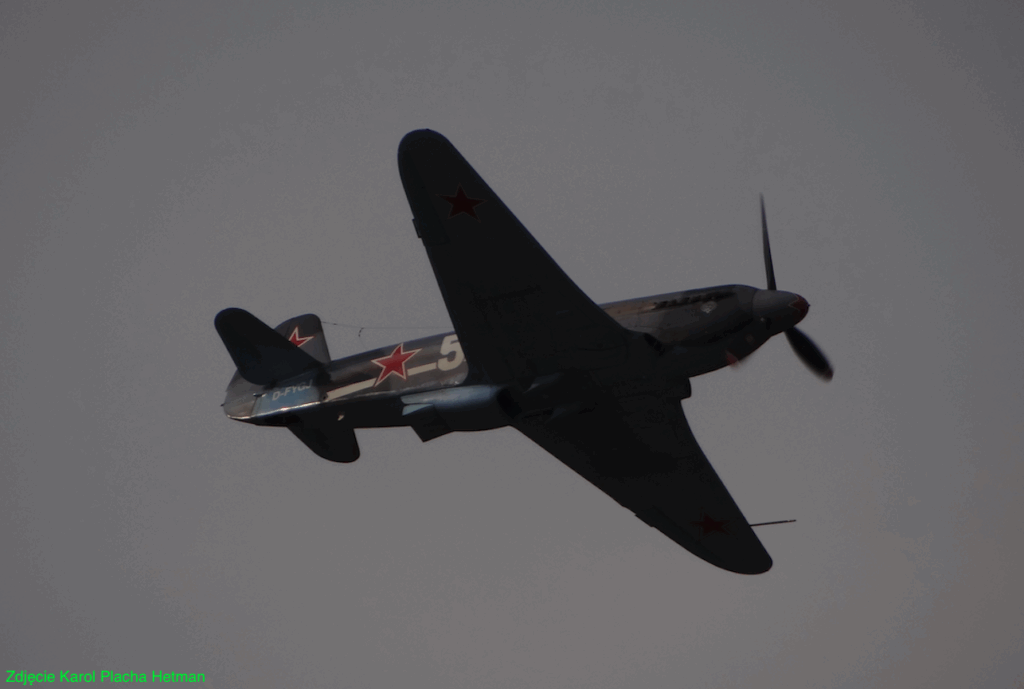
Peace period.
After the end of the war, the division, as the 3rd Brandenburg Fighter Aviation Division, received an order to return to the country to the Kutno airport (Kutno airport junction). After some time, the 10th Fighter Aviation Division was relocated to Kraków to the Czyżyny airport.
In 1946, the regiments; 9th Fighter Aviation Division, 10th Fighter Aviation Division, 11th Fighter Aviation Division were subordinated directly to the Air Force Command and already on January 24, 1946, by the Order of the Supreme Commander of the Polish Army, the 1st Fighter Aviation Division was established with the composition of; 1st Fighter Aviation Division in Warsaw, 2nd Fighter Aviation Division in Kraków (previously 10th Fighter Aviation Division), 3rd Fighter Aviation Division (previously 11th Fighter Aviation Division).
This organizational system survived until 1950. Due to the war in Korea, the Muscovites forced Poland to expand its army to an excessive size in relation to its actual needs. In connection with this, new tactical units were created. The 2nd PLM in Kraków emerged from the structures of the 1st DLM and the 7th DLM OPL was formed on its basis with headquarters and command in Kraków. Three fighter regiments were to operate within the 7th DLM OPL; in addition to the 2nd PLM in Kraków-Czyżyny, the newly created 39th PLM in Mierzęcice and the 40th PLM also in Mierzęcice.
The era of turbojet aircraft.
At the end of the 40s, it was already known that the end of piston-powered fighters was approaching and the first turbojet-powered aircraft were being introduced into service. The 2nd PLM was to be one of the first to re-equip with a new type of fighter. Initially, these were to be Yak-17 aircraft.
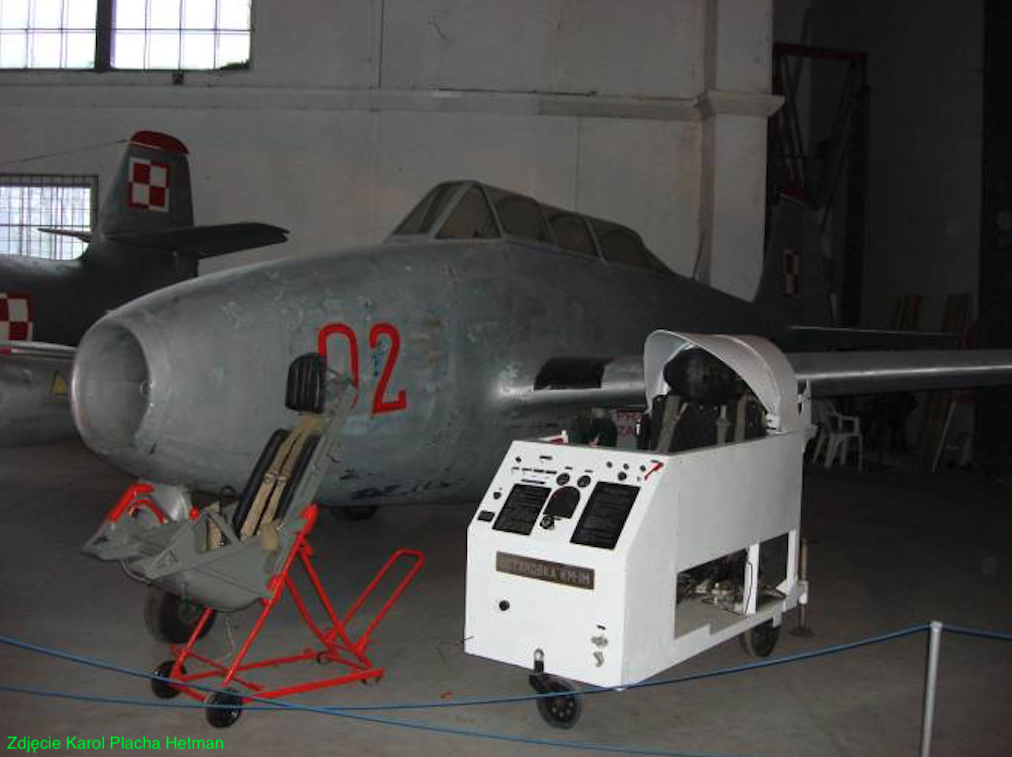
The basic re-training of pilots was to take place in Radom. However, the war in Korea accelerated the process of introducing the new technology. The new Bemowo airport in Warsaw became the place where the new type of units were to be organized. Both first fighter regiments (1st PLM from the 5th DLM and 2nd PLM from the 7th DLM) trained simultaneously. In 1950, the fighter units prepared to accept turbojet-powered aircraft. It was already known that the aircraft would be the Yak-23 fighter, the serial production of which had even begun to be prepared in Mielec. To make it easier for pilots to switch to a turbojet aircraft, a two-seater Yak-17 W (UTI) was used.
In mid-1951, more modern MiG-15 turbojet fighters began to arrive at the Bemowo airport. At that time, decisions were made that all Yak-23 fighters, approximately 100 in number, would become the armament of only the 7th DLM, i.e. the 2nd PLM, 39th PLM and 40th PLM.
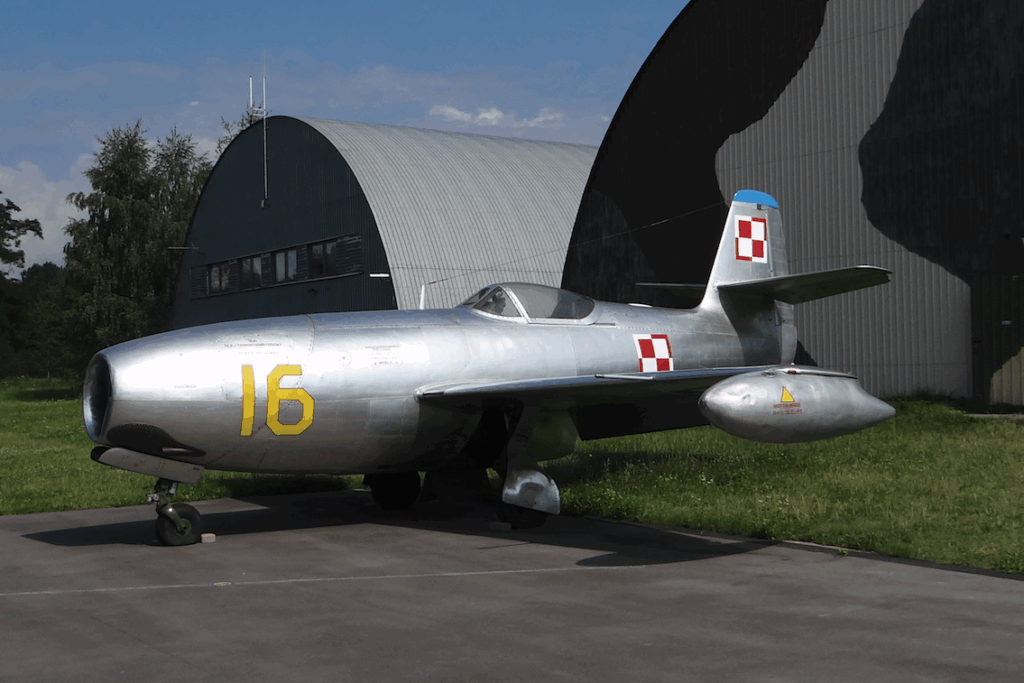
Kraków-Czyżyny Airport.
In the 50 years, the airport had a runway measuring 1,900 m x 45 m, with a concrete surface. Airport coordinates 50.04 N 19.47 E. Runway orientation 08/26. The airport had full facilities. At that time, it was also used as a civilian airport for the city of Kraków. Currently (2000), the airport serves as the Aviation Museum. It has a runway measuring 720 m x 60 m, is entered in the register of civilian airports and is used occasionally.
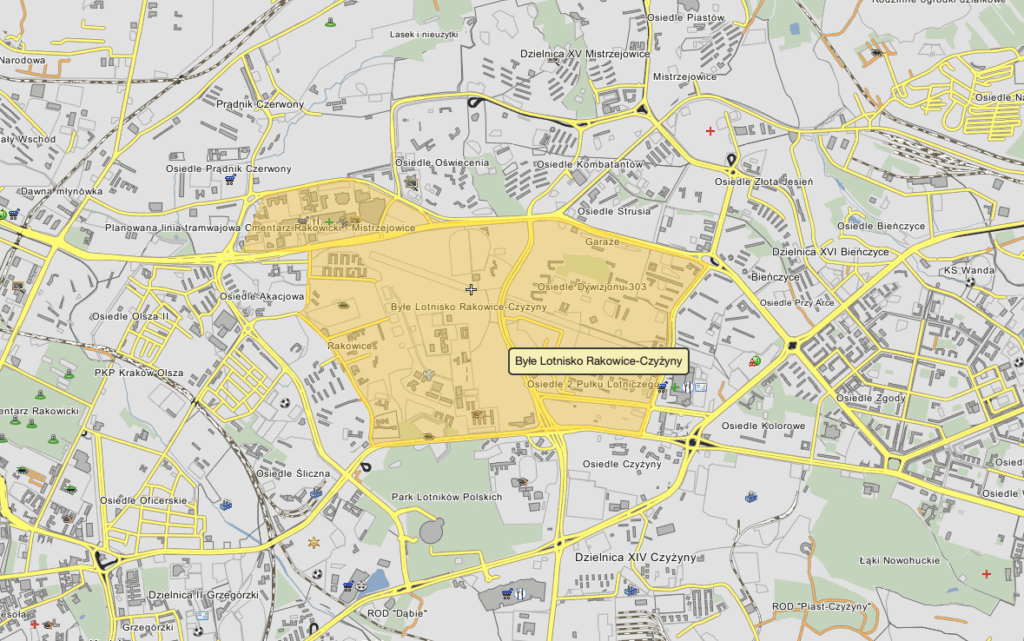
Kraków – Czyżyny. 1952.
Since 1952, the 2nd PLM with Yak-23 aircraft began its operations at Kraków Czyżyny Airport. The Błędowska Desert training ground was intensively used in the training process. The commander of the unit at that time was Jan Frej-Bielecki. Based on the personnel of the 2nd PLM, two more fighter regiments were organized, which together with it constituted the 7th DLM OPL. These were the 39th PLM and the 40th PLM. The Mierzęcice airport, near Katowice, was expanded for the newly created regiments.
In 1957, the Military Aviation, on the wave of social movements, underwent further major changes. Soviet officers left command positions in the Polish People’s Army. In addition, the Polish Air Force already had a significant number of modern combat aircraft manufactured in Poland. The 2nd PLM lost its importance. The first reason was the equipment. The regiment was one of the military units that had been using the Yak-23 aircraft for the longest time, which were technically outdated. The second reason was the large distance from the potential enemy. The third reason was the emergence of a large city – Nowa Huta. The airport in Czyżyny was located between large cities, or rather in the center of the Kraków agglomeration, and on the east-west direction. Therefore, the 2nd PLM was decided to partially relocate to the Balice airport. Nevertheless, the 2nd PLM was still part of the WOPL OK and WL and safely performed its tasks, improving the level of training of soldiers. At the beginning of the 60s, the airport in Czyżyny became a base for unused flying equipment and slowly became a museum. The airport area was often used to organize air shows for the residents of Krakow. I myself was a spectator of such shows in 1966, when Lim-1/2 fighters and parachute jumps were demonstrated in the air.
Disbandment of the 2nd PLM in Krakow-Czyżyny.
The 2nd PLM in Czyżyny was disbanded, and its number and traditions were taken over by the 4th PLM in Goleniów, which in 1967 was named the 2nd PLM Krakow in Goleniów. Most of the aircraft from the disbanded 2nd PLM were relocated to the Łask airport.
Written by Karol Placha Hetman

